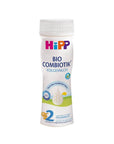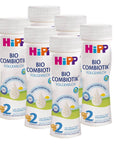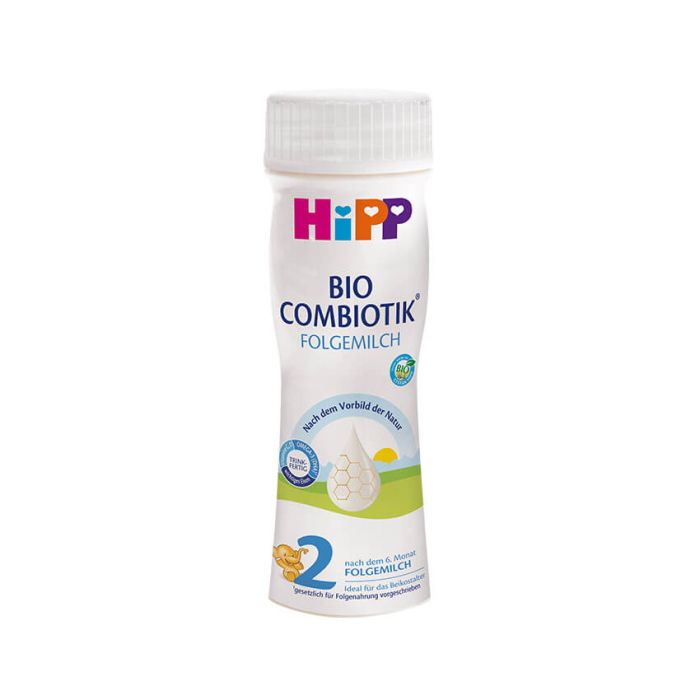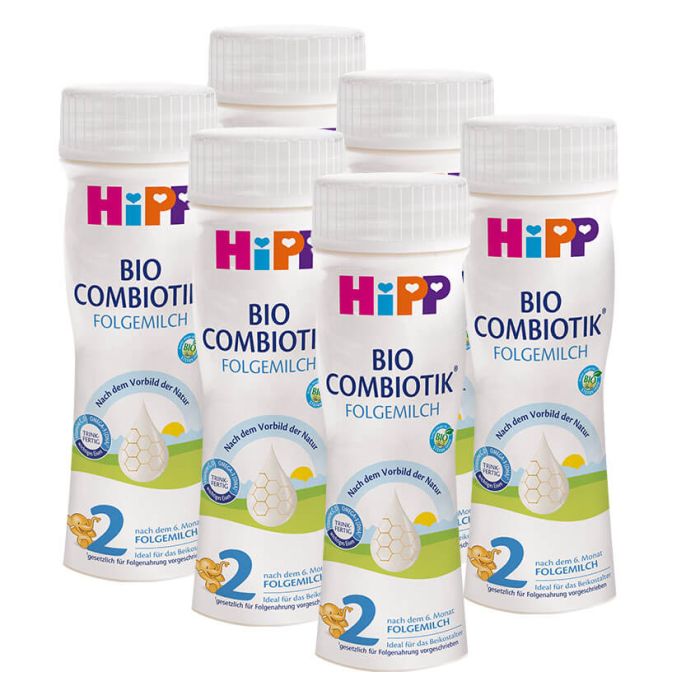

similar formulas
HiPP Bio Stage 2 Ready To Feed
PREMIUM EUROPEAN ORGANIC READY MADE BABY FORMULA

For ages
From: in 9-pack
Unit size:
Yields: of ready-made formula
Note: RTF formulas typically have <6 month expiry dates
Item is OUT OF STOCK
+ FREE SHIPPING!
BEST DEAL!
+ Canadian import duties according to this table
Organic Skim Milk, Organic Whey Products, Organic Vegetable Oils (Organic Palm Oil, Rapeseed Oil, Sunflower Oil), Lactose*, Galactooligosaccharides From Lactose, Fish Oil, Calcium Chloride, Potassium Citrate, M. Alpina Oil, Choline, Sodium Citrate, L-Phenylalanine, Calcium Orthophosphates, L-Tryptophan, Magnesium Sulfate, Calcium Carbonate, L-Histidine, Zinc Sulfate, Ferrous Sulfate, Stabilizer Lactic Acid, Vitamin C, Natural Lactic Acid Culture (Lactobacillus fermentum Hereditum®), Vitamin E, Niacin, Pantothenic Acid, Copper Sulfate, Vitamin A, Vitamin B1, Potassium Iodate, Vitamin B6, Metafolin (Calcium L-Methylfolate), Sodium Selenate, Vitamin K, Manganese Sulfate, Vitamin D, Biotin, Vitamin B12.
Your order will be processed within 2 business days and then promptly shipped out. All shipments are handled by UPS Express.
Shipping typically averages between 2-5 business days.
Please note that we are not responsible for any taxes and or duties that may be charged by the carrier before arrival at your destination.
similar formulas
WHY DO BABIES LOVE HiPP Stage 2 Ready To Feed FORMULA?
European Organic Farms

About HiPP
your baby deserves the best

Frequently Asked Questions
-
IS IT OK TO USE READY TO FEED FORMULA?
Ready-to-feed formula is a safe and convenient option for feeding infants, as it is sterile and requires no preparation. It comes in pre-sealed containers, which reduces the risk of contamination compared to powdered formulas. However, it is important to follow storage guidelines: once opened, it should be refrigerated and used within 48 hours, and any unused formula after feeding should be discarded within one hour.
-
IS IT OKAY TO SWITCH BETWEEN READY-TO-FEED AND POWDER FORMULA?
It is generally okay to switch between ready-to-feed (RTF) and powdered formula, but a gradual transition is often recommended to minimize digestive discomfort. For infants over two months old, parents can typically make the switch without needing a doctor's approval, although consulting with a healthcare provider is advisable if there are any health concerns. A common approach involves replacing one RTF feed with a powdered feed each day until the transition is complete, which can help prevent issues like constipation or gastrointestinal discomfort.
-
DO I NEED TO CHANGE FORMULA TO STAGE 2?
You should consider changing to Stage 2 formula if your baby is 6 months or older and shows signs of increased hunger or readiness for solid foods. Stage 2 formula provides additional nutrients needed for growth, so if your baby is approaching this age, a gradual transition over 1-2 weeks is recommended. Always consult with a healthcare professional if you have concerns about your baby's dietary needs.
-
IS READY TO FEED FORMULA SAFER THAN POWDER?
Ready-to-feed formula is generally considered safer than powdered formula because it is sterile and can be used directly without preparation, reducing the risk of contamination from improper mixing or handling. It is particularly recommended for infants at higher risk for infections, as it undergoes a heat process during manufacturing that kills harmful bacteria like Cronobacter and Salmonella, which may not be eliminated in powdered formulas unless prepared with boiling water.
-
WHAT IS THE DIFFERENCE BETWEEN HIPP 1 AND HIPP 2?
HiPP 1 and HiPP 2 formulas are designed for different stages of an infant's development. HiPP 1 is suitable from birth and contains essential nutrients, including DHA, to support early growth and development, while HiPP 2 is intended for babies aged 6 months and older, providing a balanced blend of nutrients tailored to meet the evolving dietary needs of older infants. Nutritionally, HiPP 2 has slightly higher levels of protein, calcium, and iron compared to HiPP 1, reflecting the increased nutritional requirements as babies transition to more solid foods and their growth accelerates.







